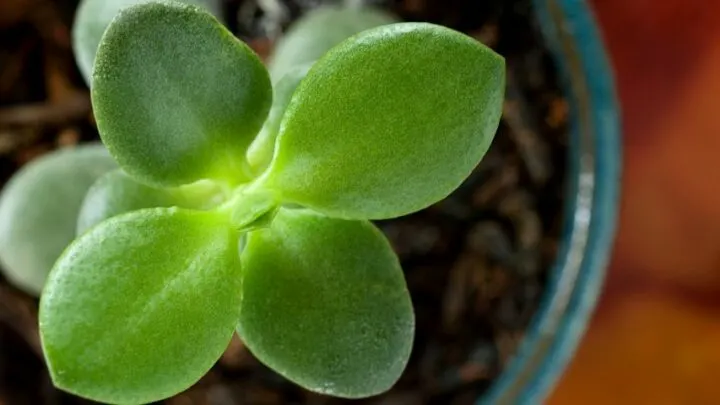Among the most famous succulents, the Jade plant (Crassula ovata) is known for its accommodating character.
It belongs to the Crassulaceae family according to the University of Iowa.
They can extend up to three feet or above when cultivated inside.
Many people prefer cultivating Jade plants at home since they are low-maintenance and attractive.
Numerous people are unaware that growing a Jade species via a stem or leaf cutting is nearly as simple as caring for one.
Table of Contents
How to Root a Jade Plant
To root a Jade plant use stem or leaf cuttings. Leaf or stem cuttings can be used to grow your Jade plants through rooting. Choose the cutting you wish to root and dip it in rooting hormone before inserting it into the soil. When rooting through a leaf, first dip it in a jar of water and wait till it develops some roots before planting into the soil.

How to Root a Jade Plant
Things You Need to Root a Jade Plant
Jade plants are easy and simple to propagate and do not require many supplies for propagation.
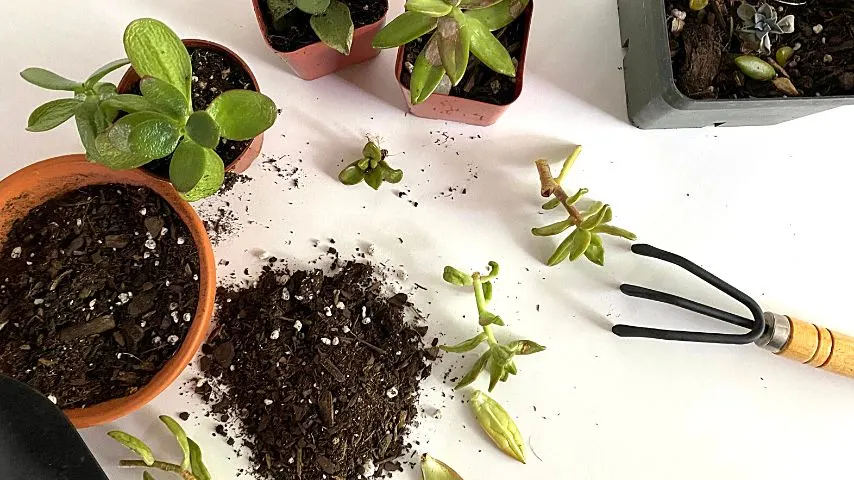
Prepare the tools you’ll need for rooting your Jade plant
The followings are the tools you will need for this process:
- Cuttings of leaves and stem of Jade plant
- Store-bought fertile soil mix or make your mixture by combining fine sand, potting mix, and liquid fertilizer in equal parts.
- Pruners or clipping pairs
- A clean and sterile pot
- A rooting hormone for the roots of the Jade plant
When Jade Plants Need to Be Rooted
Not to mention that you can propagate your Jade plant at any time of year under the appropriate conditions.
But summertime is ideal for propagating this plant.
In the hottest months, Jade plants are particularly easy to reproduce since they love to grow in a moderate, moist, but well-ventilated climate.

The best time to root your Jade plant is in the summer as it’s moist and well-ventilated during those months
Steps to Follow When Rooting the Jade Plant in Soil
Embedding Jade cuttings is the best approach to cultivating succulents in soil.
Following are the steps given below:
Step 1: Using a Good Rooting Hormone
You will get good results growing a Jade plant from cuttings whenever you apply the rooting hormone since it grows more rapidly and quickly.
To use rooting hormone, sprinkle it on the stalk of your Jade cuttings or the cut side of leaflets.
Step 2: Putting the Soil in the Pot
Fill a pot halfway using your soil mixture, including a light, sandy mixture of sandstones, potting mixture, and peat.
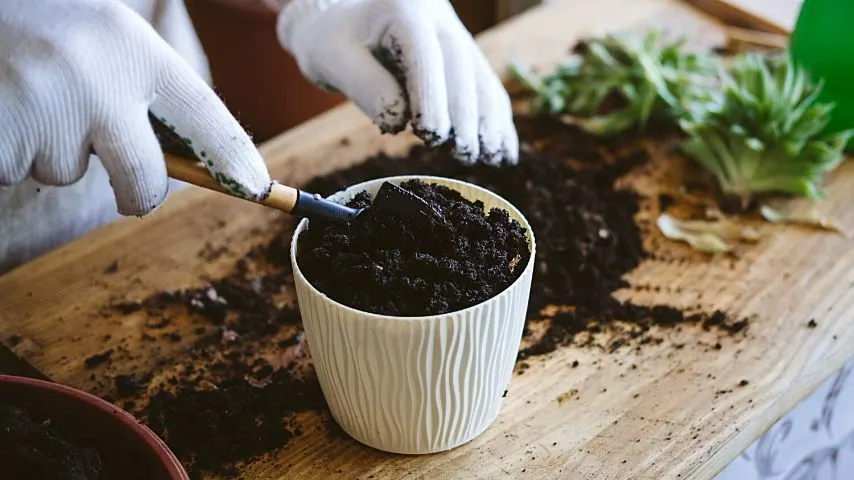
Begin placing soil halfway inside the pot you’ll use to root your Jade plant into
When reproducing a Jade plant, regular planting soil is excessively rich, and that might lead the stems to decompose.
Step 3: Digging the Hole
Now dig a tiny hole in the potting material for the cutting using fingernails. Then insert the stem/leaf cuttings carefully into the hole to avoid rubbing off the hormone.
Now pack the surrounding with the soil to keep it stable and ensure that the dirt is in touch with the cuttings.
Step 4: Putting the Plant in the Right Area
Place the Jade plant cutting in a shaded area away from direct sunlight. Wait till the Jade cutting grows stems before watering it.
Use a plant’s spray bottle to softly wet the cutting every day if the air is dry. However, be aware that they do not require a lot of moisture.
Jade plant cutting has begun to sprout roots when you observe fresh vegetation on its surface.
How to Root Jade Plants from Stem Cuttings
You will have to follow the following steps to reproduce a Jade plant from stem cutting:
Step 1: The Selection of the Appropriate Branch
Selecting a branch from the cutting of a Jade plant is the first step in plant propagation.
The selected branch has to be healthy, strong, and disease-free so it can easily reproduce. Also, make sure that the knife you use is clean and sharp to have appropriate cutting.
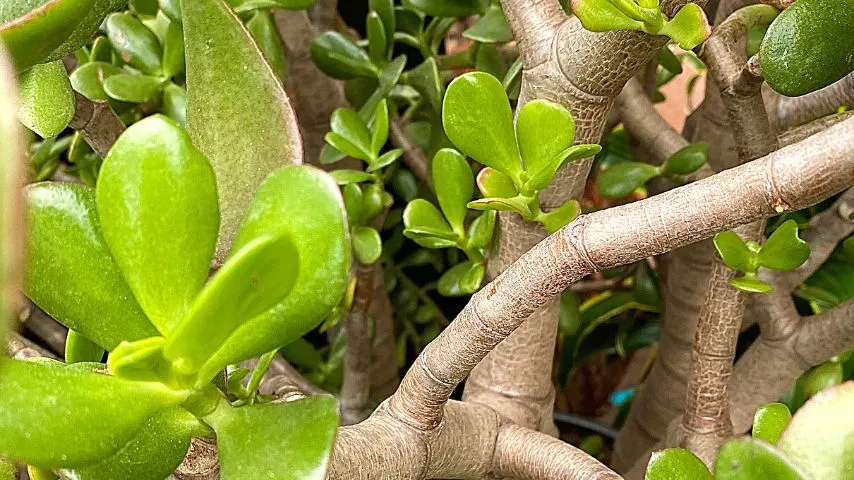
Select a healthy, disease-free stem from the Jade plant to root it successfully
For rooting a Jade plant, the branch size should be 8-10 cm long and is approximately 3 to 4 inches.
Step 2: Allowing the Cuttings to Dry Up
The next step is to let the stem cuttings dry.
This is because when you are rooting, the Jade plant cutting you took is moist, and the wounds are damp, thus leaving room for diseases.
Leave the cuttings to recover and dry in a hot environment.
Then you may sprinkle the exposed wounds with a rooting hormone that contains an anti-fungal substance to ensure that no diseases develop in the branch of a Jade plant cutting.
Step 3: Placing the Cuttings in the Container
Now place your cutting of Jade plant in a fertile potting mixture.
Water carefully while planting a Jade plant cutting because the potted material needs to be wet until the cutting grows.
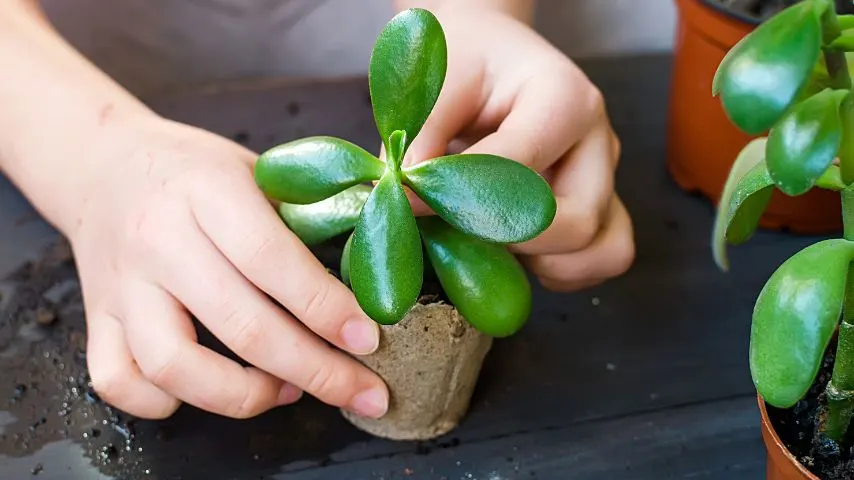
Place the healthy Jade plant stem cutting into the fertile potting mix
Then you may feed it like a regular Jade plant once it has developed a root system.
How to Root Jade Plants From Leaf
Although growing a huge Jade plant from leaves may take longer than growing it from branch cuttings, it is worth trying.
Following are the steps for rooting a Jade plant from leaves.
Step 1: The Selection of the Right Leaves
Start by picking a healthy leaf from the Jade plant. Ensure that you take the leaf cuttings appropriately.
Pull off every leaflet cautiously when you intend to utilize this for Jade plant propagation.
After breaking the leaflet off, ensure that you grab the complete branch. This is because if the bottom section of the leaflet is pulled off, the leaves will not root.
Step 2: Inserting the Leaves into the Container
The next stage in Jade plants propagation from leaflets is to place the leaves in a potting mixture that contains peat moss and half sand.
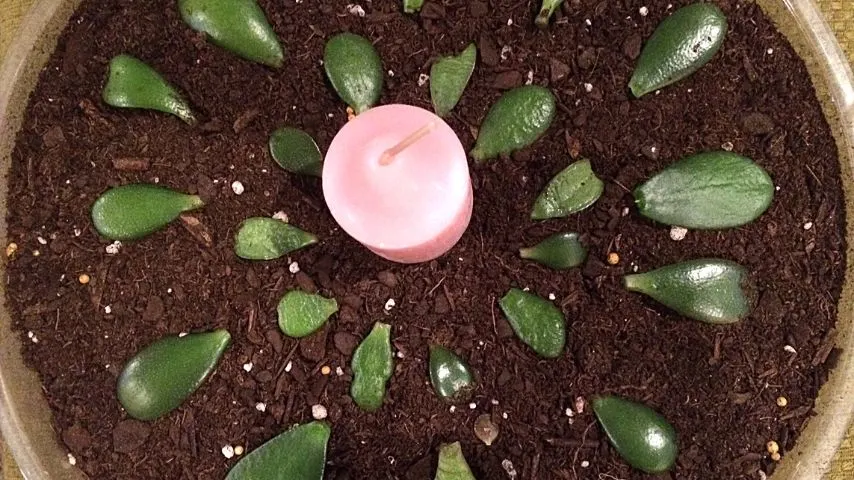
After selecting the leaves from your mother Jade plant, insert them into the potting mix containing peat moss and half sand
The leaf will begin to sprout little shoots out from the margins of the blade that will bend towards the ground after it has fully developed.
Step 3: Irrigation of the Plant
After placing the Jade leaf inside this potting mixture, water and moisten it carefully until the leaves develop roots.
Young plants may grow anytime between 2 weeks to 2 months.
Read about how to grow Carissa Macrocarpa next.
Frequently Asked Questions about How to Root a Jade Plant
Is it possible to recover a broken Jade plant?
A damaged Jade plant can be recovered by stem cuttings, which is the quickest technique than leaf-cutting to propagate. As a result, rooting a damaged Jade plant will be a breeze.
How long do you need in rooting a Jade plant cutting?
It takes around three weeks for most cuttings to develop and show signs of rooting, proceeded by four to six weeks for full root growth.

Daniel has been a plant enthusiast for over 20 years. He owns hundreds of houseplants and prepares for the chili growing seasons yearly with great anticipation. His favorite plants are plant species in the Araceae family, such as Monstera, Philodendron, and Anthurium. He also loves gardening and is growing hot peppers, tomatoes, and many more vegetables.

